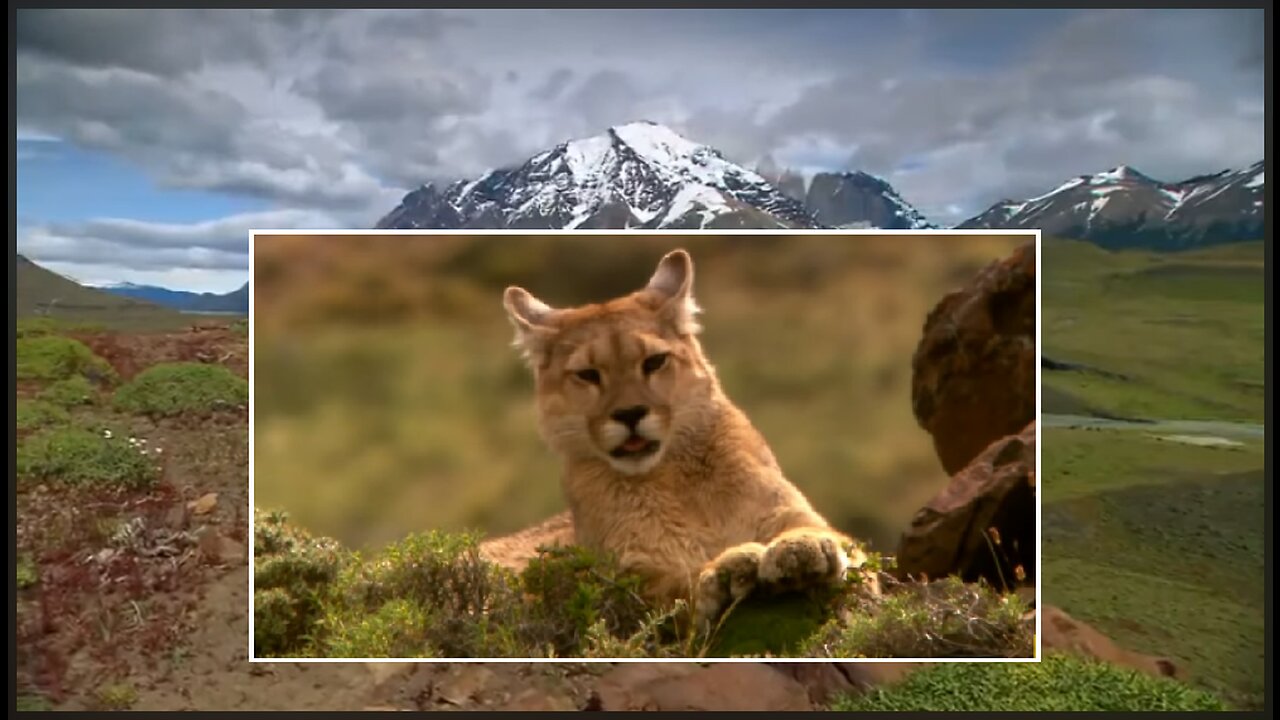Premium Only Content

Documentary: Educational: Pumas Elusive Hunters of the Andes - Animals Nature Cats
Documentary: Educational: Pumas Elusive Hunters of the Andes - Animals Nature Cats - The puma, a member of the family Felidae, has the widest distribution of any New World mammal, with a range extending from southeastern Alaska to southern Argentina and Chile. Pumas live in a variety of habitats, including desert scrub, chaparral, swamps, and forests, but they avoid agricultural areas, flatlands, and other habitats lacking cover.
The puma is active mostly at dusk, night, and dawn. Throughout its range its primary prey is hoofed mammals (ungulates, especially deer) larger than itself. In North America each puma kills about 48 ungulates per year and a larger number of smaller prey, including rabbits and hares, coyotes, bobcats, porcupines, beavers, opossums, raccoons, skunks, and other pumas. Domestic livestock, especially sheep, goats, and young calves, are also taken. It is rare for pumas to feed on carcasses that they did not kill. When hunting, a puma moves about 10 km (6 miles) per night, hunting in several travel bouts averaging 1.2 hours each. Traveling alternates with shorter periods of stalking, waiting in ambush, or resting. Slower than most of its prey, it springs from cover at close range, usually from behind the intended victim. When feeding on a large mammal, it minimizes spoilage and loss to scavengers by dragging the carcass to a secluded cache site and covering it with leaves and debris. During the day the cat commonly beds within 50 metres of the carcass, and it will feed for an average of three nights on a large kill. Except when feeding on large prey, a puma rarely beds in the same location on successive days.
Adult males and females are both solitary except for breeding associations lasting one to six days. Pumas are usually silent, but during this time they emit long, frightening screams intermittently for several hours. Pumas breed throughout the year, with a summer peak in births at higher latitudes. The interval between births is about two years, but it is less if a litter dies or disperses early. Cubs are born after a 90-day gestation period; the litter size usually is three but ranges from one to six. Spotted and born blind, each weighs about half a kilogram.
-
 17:52
17:52
UndeniableTruth
14 days agoBlack Mob Attacks Whites In Cincinnati · Sucker Punch Knocks Outs Female Helping Man Get Up
68617 -
 10:59
10:59
itsSeanDaniel
1 day agoEuropean Leaders INSTANTLY REGRET Disrespecting Trump
401 -
 8:16
8:16
MattMorseTV
14 hours ago $3.94 earnedTrump’s name just got CLEARED.
36.3K51 -
 16:43
16:43
GritsGG
14 hours agoThey Buffed This AR & It Slaps! Warzone Loadout!
3.49K -
 2:05:30
2:05:30
Side Scrollers Podcast
18 hours agoEveryone Hates MrBeast + FBI Spends $140k on Pokemon + All Todays News | Side Scrollers Live
96.5K8 -
 11:06
11:06
The Pascal Show
12 hours ago $0.46 earned'THEY'RE GETTING DEATH THREATS!' Jake Haro's Lawyer Breaks Silence On Emmanuel Haro's Disappearance!
4.67K -
 LIVE
LIVE
Lofi Girl
2 years agoSynthwave Radio 🌌 - beats to chill/game to
406 watching -
 2:19:32
2:19:32
Badlands Media
1 day agoDEFCON ZERO Ep. 005: False Flags, Cyber Fronts & Global Power Plays
140K57 -
 2:35:23
2:35:23
FreshandFit
7 hours agoWhy Black Men Don't Date Black Women Debate
32.5K33 -
 2:03:42
2:03:42
Inverted World Live
11 hours agoBigfoot Corpse Coming to the NY State Fair | Ep. 94
104K24